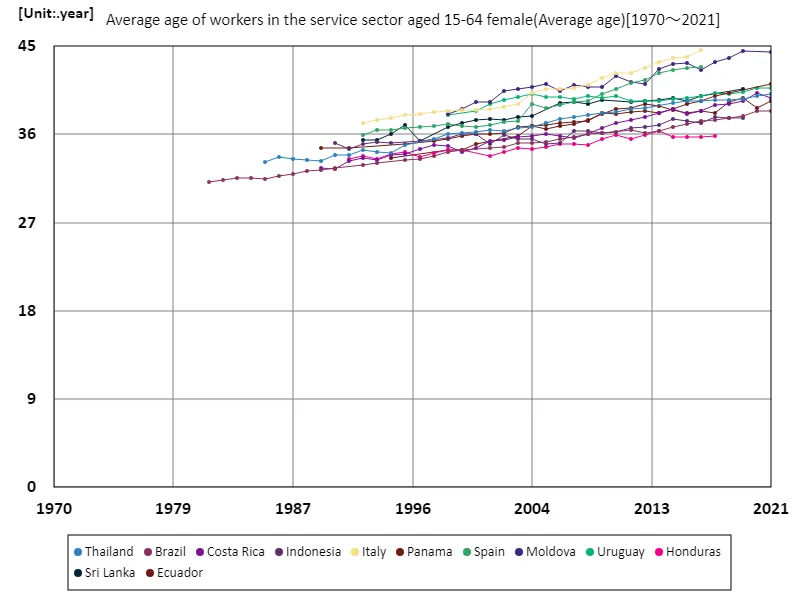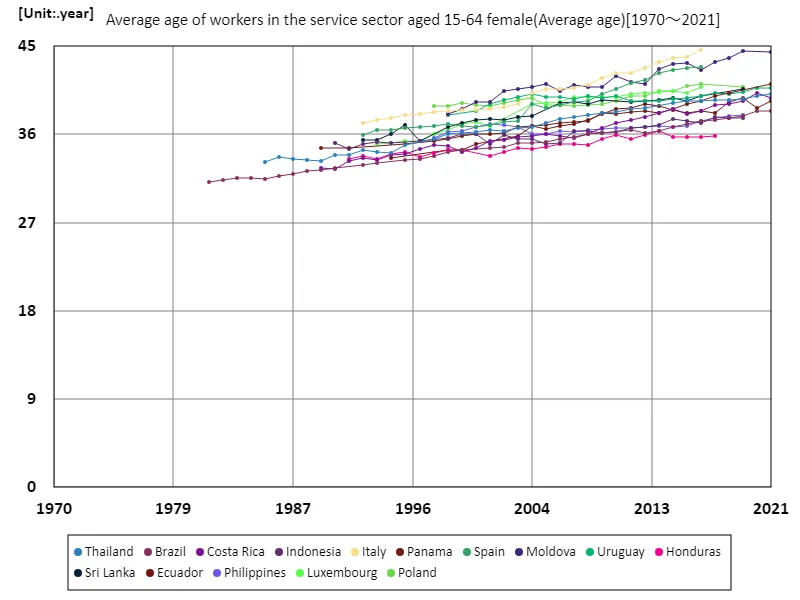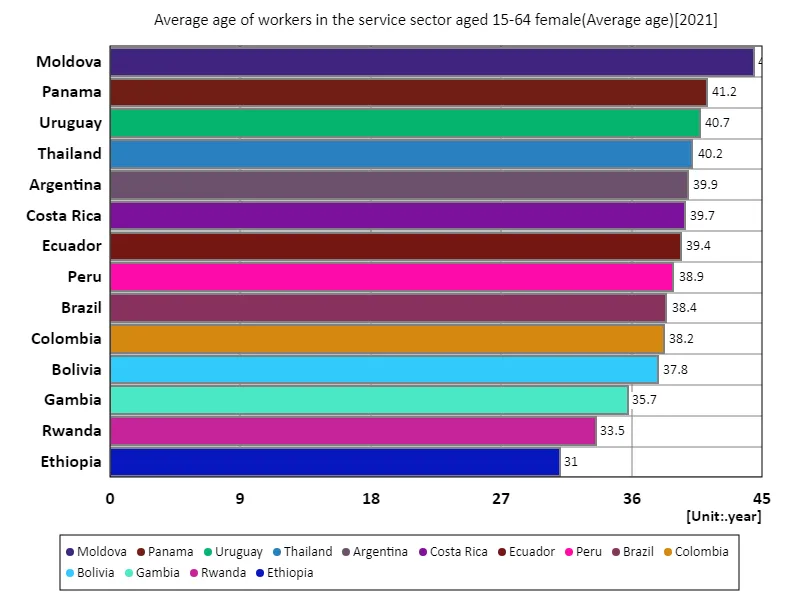Abstract
The data, which shows that the average age of female workers aged 15-64 in Moldova’s service sector is 44.4 years, points to several important trends. First, the high average age suggests that the proportion of older people in the labor market is increasing. In many countries, the ageing workforce is caused by rising retirement ages and an increase in the number of people working longer periods of time. There may also be a shortage of young workers. This may be due to changes in education and career options, or a less attractive labour market. Furthermore, Moldova faces economic challenges that may make experienced workers more likely to stay longer.
Service sector, female workers aged 15-64, average age
The fact that the average age of female workers aged 15-64 in the Italian services sector reached 44.6 years in 2016 and has remained at this level ever since shows some distinctive trends. First, Italy is experiencing an ageing population, with a marked aging of the working population. This is thought to be due to longer life spans and rising retirement ages. Additionally, economic uncertainty and changes in the job market are discouraging younger workers from entering the workforce, while more experienced workers are sticking around longer. Furthermore, Italy has faced economic difficulties over the past few decades, making it difficult for young people to participate in the workforce. In this context, the higher average age of service sector workers reflects structural changes in the labour market.


The maximum is the latest one, 44.6year of Italy
Services sector, female workers aged 15-64, average age (worldwide)
The average age of female workers aged 15-64 in the Italian services sector reached 44.6 years in 2016 and has remained at that level ever since, indicating an important transformation in the Italian labour market. First, this high average age reflects an aging workforce. As people live longer and retirement ages increase, experienced workers are increasingly sticking to their jobs for longer periods of time. In addition, economic instability and a lack of employment opportunities for young people are also factors that inhibit young workers from entering the industry. Italy faces long-term economic difficulties and labour market rigidities, which are likely contributing to an ageing female workforce. Overall, the picture is one in which an ageing workforce still plays a vital role in the services sector.


The maximum is the latest one, 44.6year of Italy
Services sector, female workers aged 15-64, average age (world, latest year)
According to 2021 data, the average age of female workers aged 15-64 in the services sector is 38.5 years, with the maximum reaching 44.4 years in Moldova. This trend points to several important features in the labor market. First, the rising average age reflects an ageing workforce, particularly in countries like Moldova, where there are many older female workers. This is due to longer retirement ages and more workers choosing to work longer periods. Additionally, in countries like Moldova, economic conditions and limited employment opportunities can make it difficult for young people to participate in the workforce. As a result, there tends to be a relatively large number of older female workers. The overall average age of 38.5 years points to an ageing labour market in general, with more experienced workers playing a key role in the service sector in particular. These ageing trends also reflect changes in economic security and the working environment, forcing policymakers and businesses to consider workforce diversity and sustainability.


The maximum is 44.4year of Moldova, the average is 38.5year, and the total is 539year
Services sector, female workers aged 15-64, average age (region, latest year)
According to 2008 data, the average age of female workers aged 15-64 in the service sector was 29.1 years, with the highest age in the Central African Republic. This low average age indicates several notable trends. First, many developing countries, including the Central African Republic, have a youthful workforce, with young female workers making up a large proportion of the service sector. This suggests that due to lack of educational opportunities and economic constraints, people enter the labour market at a relatively young age. Additionally, the overall average age remains at 29.1 years, reflecting the fact that the service sector workforce is made up of younger people with relatively few older workers. This is due to the stage of economic development in each region and social factors, and is thought to be one of the reasons why young workers are more prevalent in the service sector. As a result, it can be said that the characteristics of the labour market and the economic situation in developing countries have a significant impact on the average age of female workers.


The maximum is 29.1year of Central African Republic, the average is 29.1year, and the total is 29.1year



Comments